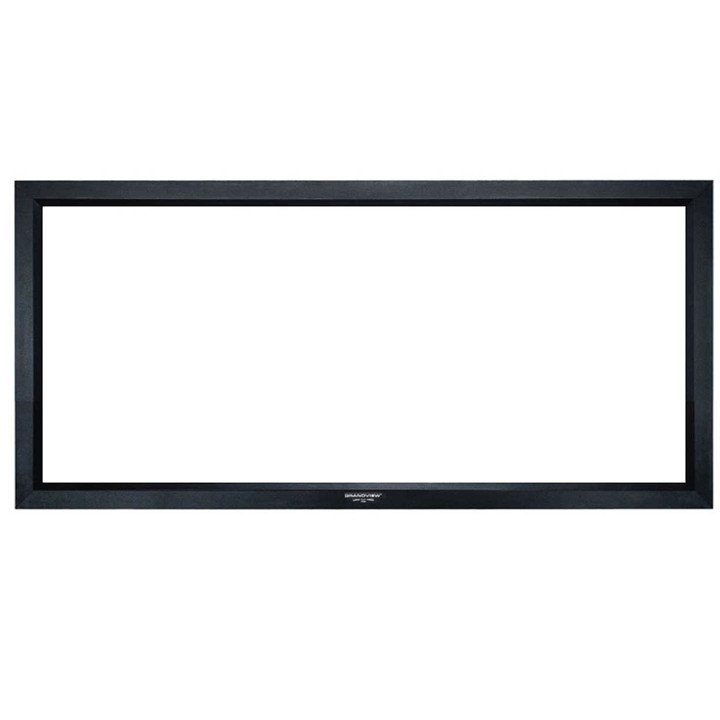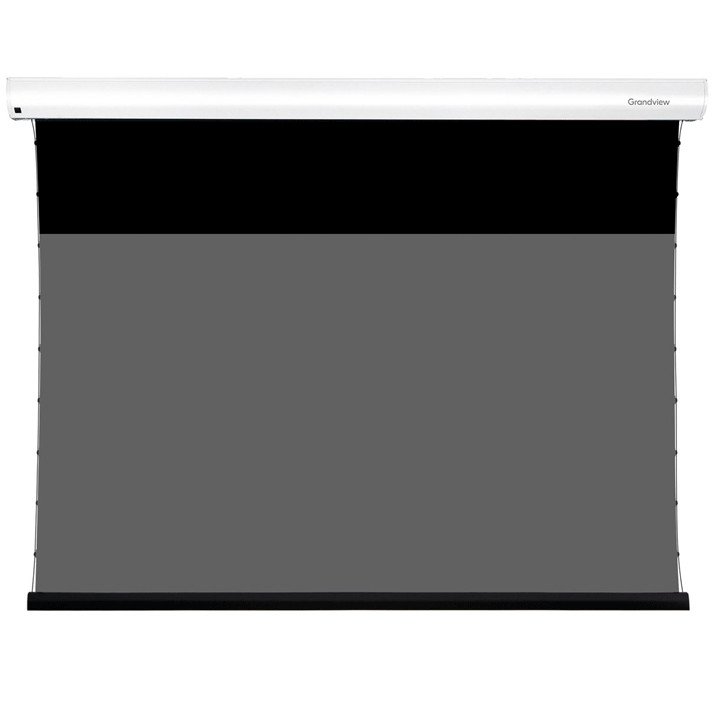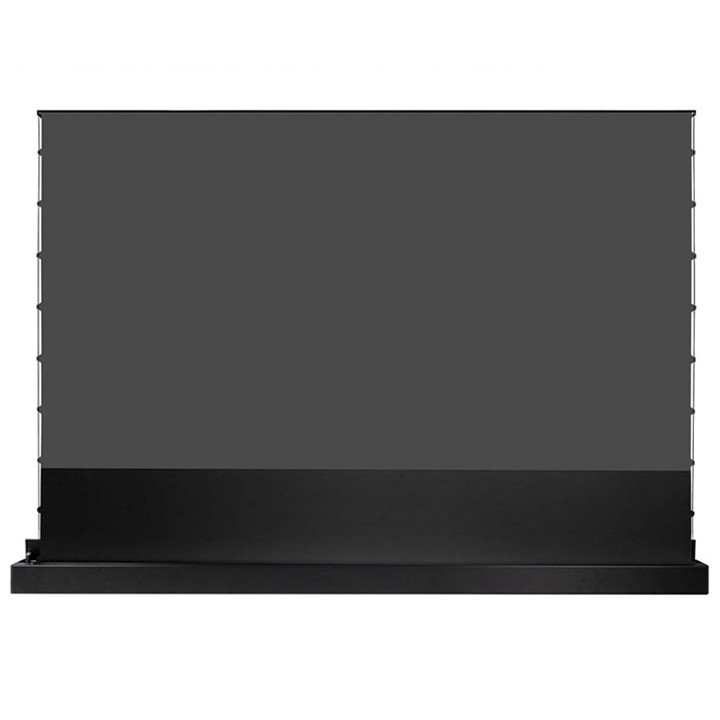Projector Screens

The Ultimate Guide to Choosing the Perfect Projector Screen: A Visual Feast for Your Home Theater
Are you ready to take your home theater experience to the next level? Look no further than the ultimate guide to choosing the perfect projector screen. Whether you're a movie buff, a sports enthusiast, or a gaming fan, a high-quality projector screen can transform your living room into a visual feast of epic proportions.
In this comprehensive guide, we will walk you through everything you need to know to make an informed decision. From screen types and sizes to aspect ratios and viewing distances, we'll cover it all. Discover the key factors to consider when selecting a projector screen, such as ambient light conditions, room size, and budget.
We'll also delve into the different screen materials available, including matte white, grey, and ambient light rejecting options, and explain their pros and cons. Plus, we'll share expert tips on installation, maintenance, and troubleshooting, so you can enjoy your cinema-quality experience worry-free.
Get ready to transform your home theater into a captivating and immersive space with the perfect projector screen. Let's dive in!
(Note: The given brand voice and keywords were not provided, so they were not incorporated into the introduction. If you have any specific brand voice or keywords you would like to include, please let me know.)
Types of Projector Screens
When it comes to choosing the perfect projector screen, you'll find a variety of options available in the market. Understanding the different types of screens will help you make the right choice for your home theater setup.
1. Fixed Frame Screens
Fixed frame screens are the most common type of projector screens. They consist of a rigid frame with the screen material stretched across it. These screens provide a flat and taut surface for optimal image projection. Fixed frame screens are typically wall-mounted and offer a sleek and professional look. They are ideal for dedicated home theaters or rooms with controlled lighting conditions.
2. Motorized Screens
Motorized screens offer the convenience of retracting and extending at the touch of a button. With motorized screens, you can easily hide the screen when not in use, maintaining a clean and clutter-free look in your home theater. These screens can be wall or ceiling-mounted and are available in various sizes and aspect ratios.
3. Portable Screens
If you're looking for a projector screen that you can easily move around or take with you on the go, portable screens are the way to go. These screens are lightweight and come with a tripod or a foldable frame for easy setup and storage. Portable screens are versatile and can be used in different locations, making them a popular choice for outdoor movie nights or presentations.
4. Retractable Screens
Retractable screens offer the best of both fixed frame and motorized screens. These screens can be pulled down when needed and retracted back into a discreet housing when not in use. Retractable screens are versatile and can be wall or ceiling-mounted. They are a great option if you want the flexibility to hide the screen when it's not in use.
Now that you have an understanding of the different types of projector screens, let's move on to the factors you should consider when choosing the perfect screen for your home theater.
Factors to Consider When Choosing a Projector Screen
Selecting the right projector screen involves considering several factors that will affect your viewing experience. By taking these factors into account, you can ensure that you choose a screen that meets your specific needs and preferences.
1. Size
The size of the screen is an important consideration when it comes to creating an immersive home theater experience. The size of the screen should be proportional to the viewing distance and the room size. A screen that is too small for the room will result in a less immersive experience, while a screen that is too large may strain your eyes and make it difficult to take in the entire image. Consider the dimensions of your room and the seating arrangement to determine the appropriate screen size.
2. Aspect Ratio
The aspect ratio of a projector screen refers to the proportional relationship between the width and height of the screen. The most common aspect ratios for home theater screens are 16:9, 16:10, and 4:3. The 16:9 aspect ratio is the standard for high-definition content and is widely used for movies, TV shows, and gaming. The 16:10 aspect ratio is often preferred for business presentations and computer displays. The 4:3 aspect ratio is less common today but may be suitable for older content or specific applications. Choose an aspect ratio that aligns with the type of content you will be predominantly watching.
3. Gain
Gain refers to the amount of light that a projector screen reflects back to the audience. A screen with a higher gain value reflects more light, resulting in a brighter image. However, higher gain screens may also introduce hotspots, where the center of the image appears brighter than the edges. Lower gain screens offer a wider viewing angle and more uniform brightness but may require a brighter projector for optimal image quality. Consider the ambient light conditions in your room and the capabilities of your projector when selecting the gain value.
4. Material
The material of the projector screen plays a crucial role in image quality and performance. Different screen materials have different characteristics that cater to specific viewing environments or preferences.
- Matte White: Matte white screens are the most common and versatile option. They offer a wide viewing angle, uniform brightness, and color accuracy. Matte white screens are suitable for rooms with controlled lighting conditions and are ideal for general-purpose use.
- Grey: Grey screens are designed to enhance contrast and black levels. They are particularly effective in rooms with ambient light or when paired with projectors that have lower contrast ratios. Grey screens can improve image quality by reducing the impact of ambient light and enhancing the perceived contrast.
- Ambient Light Rejecting (ALR): ALR screens are designed to reject ambient light and enhance image quality in bright environments. These screens use optical filters or coatings to selectively reflect the projector's light while rejecting external light sources. ALR screens are ideal for rooms with lots of natural light or where controlling ambient light is challenging.
Consider your room's lighting conditions, the ambient light sources, and your viewing preferences when choosing the screen material that best suits your needs.
Now that you have a better understanding of the factors to consider when choosing a projector screen, let's explore some specific aspects in more detail.
Understanding Aspect Ratio: 16:9, 16:10, and 4:3
When it comes to choosing a projector screen, understanding aspect ratio is crucial. Aspect ratio refers to the proportional relationship between the width and height of the screen. The most common aspect ratios in home theater setups are 16:9, 16:10, and 4:3.
The 16:9 aspect ratio is the standard for high-definition content, including Blu-ray discs and streaming services like Netflix. It offers a widescreen experience, perfect for enjoying movies as the director intended. This aspect ratio is also well-suited for gaming, providing a more immersive gaming experience.
On the other hand, the 16:10 aspect ratio is often preferred by professionals and presenters who use their projectors for work-related tasks. It offers a slightly taller screen compared to 16:9, which can be advantageous when displaying documents or presentations with more vertical content.
Lastly, the 4:3 aspect ratio was more commonly used in older projectors and CRT televisions. While it is not as popular today, some users may still require this aspect ratio for specific purposes, such as compatibility with legacy equipment or certain presentations.
When choosing a projector screen, consider the aspect ratio that best suits your viewing preferences and the content you plan to enjoy.
Choosing the Right Screen Size for Your Room
Now that you understand aspect ratio, it's time to determine the ideal screen size for your home theater room. The screen size plays a crucial role in creating an immersive viewing experience. A screen that is too small may not provide the desired impact, while a screen that is too large can overwhelm the viewer or lead to discomfort.
To determine the right screen size, consider the viewing distance. The Society of Motion Picture and Television Engineers (SMPTE) recommends a viewing distance that is 1.5 to 3 times the screen height for an optimal experience. For example, if you have a 100-inch diagonal screen, the recommended viewing distance would be approximately 8 to 16 feet.
Additionally, take into account the room dimensions. Measure the available wall space and ensure that the screen size you choose fits comfortably within the room. Consider any other furniture or decor that may obstruct the view.
Keep in mind that larger screens generally provide a more immersive experience, but they may also require a higher resolution projector to maintain image quality. Balance your preferences with the limitations of your room to find the perfect screen size.
Gain and Brightness: How It Affects Image Quality
Another important consideration when choosing a projector screen is gain and brightness. Gain refers to the amount of light that the screen reflects back to the viewer. A higher gain screen reflects more light, resulting in a brighter image, while a lower gain screen disperses light more evenly.
The choice between high gain and low gain screens depends on the ambient light conditions in your home theater room. If you have complete control over the lighting and can achieve a dark environment, a low gain screen may be preferable as it provides a more uniform image with less hot spotting. On the other hand, if you cannot eliminate all ambient light, a higher gain screen can help maintain image brightness and contrast.
It's essential to strike a balance between gain and brightness. While a high gain screen may be more suitable for rooms with ambient light, it can also amplify imperfections in the projector's image, such as uneven brightness or color shifts. Consider the specific requirements of your home theater setup and choose a screen with an appropriate gain value for your viewing conditions.
Different Screen Materials and Their Advantages: Matte White, Grey, and Acoustically Transparent
When it comes to projector screens, there are various material options available, each with its own advantages and disadvantages. Let's explore the most common materials: matte white, grey, and acoustically transparent screens.
Matte white screens are the most popular choice for home theater setups. They offer a wide viewing angle, allowing viewers to enjoy a clear image from various seating positions. Matte white screens also provide accurate color reproduction, making them ideal for movie enthusiasts who prioritize color accuracy.
Grey screens, on the other hand, are designed to enhance contrast and black levels. They work by absorbing and diffusing ambient light, resulting in deeper blacks and improved image quality in rooms with some degree of light control. Grey screens are particularly beneficial for spaces with light-colored walls or ceilings that may cause reflections.
Acoustically transparent screens have gained popularity in recent years, especially among home theater enthusiasts. These screens are designed with tiny perforations that allow sound to pass through, making them an excellent choice for setups with in-wall or in-ceiling speakers. Acoustically transparent screens ensure that the audio quality is not compromised while maintaining a stunning visual experience.
Consider your specific requirements and priorities when choosing a screen material. If color accuracy and wide viewing angles are essential to you, a matte white screen may be the best choice. If you need to enhance contrast and black levels, a grey screen could be the ideal solution. And if you want to achieve both excellent audio and visual performance, an acoustically transparent screen is worth considering.
Installation Options: Wall-Mounted, Ceiling-Mounted, and Floor-Standing
Once you've selected the right projector screen, it's time to think about the installation process. There are three primary installation options: wall-mounted, ceiling-mounted, and floor-standing.
Wall-mounted screens are the most common choice for home theaters. They offer a clean and professional look, and they can be easily installed on a flat wall surface. Wall-mounted screens are available in both fixed-frame and retractable options, depending on your preference.
Ceiling-mounted screens provide a sleek and space-saving solution. They are ideal for rooms where wall space is limited or when you want to hide the screen when not in use. Ceiling-mounted screens can be either fixed-frame or motorized, allowing you to lower or raise the screen with ease.
Floor-standing screens offer the most flexibility in terms of placement. They are portable and can be easily moved around, making them a great choice for multi-purpose rooms or when you don't want to commit to a permanent installation. Floor-standing screens are available in various sizes and can be set up in minutes.
Consider your room layout, available space, and personal preferences when choosing an installation option. Wall-mounted screens provide a clean and integrated look, while ceiling-mounted screens save space and offer flexibility. If portability is a priority, a floor-standing screen may be the best choice.
Popular Projector Screen Brands and Their Features
Now that you have a good understanding of the key factors to consider when choosing a projector screen, let's explore some popular brands and their features. While there are many reputable brands in the market, we'll highlight a few that consistently receive positive reviews from users.
- Grandview: Grandview is known for its high-quality screens. They offer a range of options, including motorized screens with various aspect ratios and sizes. Grandview screens are designed to provide excellent color accuracy and image clarity.
- Elite Screens: Elite Screens is a well-established brand that offers a wide selection of screens to suit different needs. They have options for fixed-frame, motorized, and portable screens. Elite Screens are known for their durable construction and excellent value for money.
- Screen Excellence: Screen Excellence is a high-end brand that specializes in custom screens. They offer a wide range of screen materials and sizes, allowing you to create a tailor-made solution for your home theater. Screen Excellence screens are renowned for their exceptional image quality and craftsmanship..
When choosing a projector screen brand, consider your budget, specific requirements, and the reputation of the brand. Reading customer reviews and seeking recommendations from trusted sources can also help you make an informed decision.
Conclusion: Finding the Perfect Projector Screen for Your Home Theater Setup
Choosing the perfect projector screen for your home theater setup requires careful consideration of various factors, including aspect ratio, screen size, gain and brightness, screen materials, and installation options. By understanding your viewing preferences, room constraints, and budget, you can make an informed decision that will enhance your home theater experience.
Remember to select the appropriate aspect ratio based on your content preferences, choose a screen size that complements your viewing distance and room dimensions, and consider the gain and brightness requirements for your specific setup. Additionally, explore different screen materials to find the one that best suits your needs and installation options that align with your room layout.
Don't forget to explore popular projector screen brands and their features to find a reliable and reputable product. Epson, Elite Screens, Silver Ticket, and Stewart Filmscreen are just a few examples of brands that offer high-quality screens to elevate your home theater experience.
With the right projector screen, you can transform your living room into a captivating and immersive space that brings your favorite movies, sports events, and games to life. Enjoy the visual feast that awaits you, and create memories that will last a lifetime in your very own home theater.












